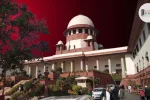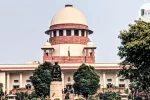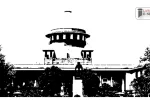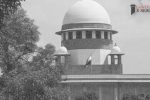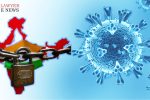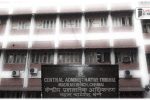Quality of evidence is more important than quantity – SC
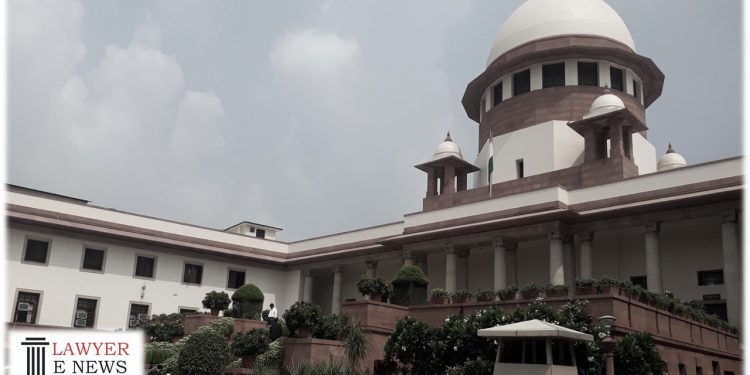
The Supreme Court observed in the recent judgement (Munna Lal vs State of U.P. D.D. 24th Jan 2023) that the prosecution failed to examine other eye-witnesses to the murder, suggesting that their testimony would not have supported the prosecution’s story.
A murder occurred on September 5th, 1985, at 10:00 AM. An FIR was lodged by the victim’s son, Ram Vilas, at 12:10 PM under section 302 of the IPC. Four individuals, Munna Lal, Sheo Lal, Babu Ram, and Kalika, were accused of committing the murder. The Station Police Officer and other police personnel conducted an inquest at the crime scene and recovered a bullet from the victim’s injuries.
PW-1 Doctor testified that Narayan died from shock and hemorrhage from multiple wounds, some of which were caused by a gun and a tamancha while others were caused by a lathi and a kanta. PW-2, the son of the deceased, claimed that Narayan was killed by four accused persons who were armed with different weapons. He identified Munna Lal and Sheo Lal as being present in court and stated that the attack was witnessed by several other people, including Kedar and Hemraj.PW-2 also disclosed that Narayan had a prior history of conflict with Sheo Lal and was involved in several legal cases. PW-3, an eyewitness, reported seeing the accused persons killing Narayan with weapons and fleeing the scene after the attack.PW-3 denies being related to Narayan’s family and does not know the names of the villagers who arrived later. PW-4 conducted the inquest and found a bullet in the body of the deceased.
The Investigating Officer was not examined by the prosecution. Further, neither the gun and the tamancha nor the kanta and lathi were seized. Also, there were no forensic laboratory or ballistic reports.
Sessions Judge convicted the appellant for the offences charged based on consistent and unimpeachable direct evidence, supported by other circumstantial evidence, including motive and medical evidence. The High Court upheld the decision of the Sessions Judge and dismissed the appeal.
Aggrieved appellants approached the Supreme Court.
Appellant contended that there was long-standing enmity between Narayan and Jaswant (father of Munna Lal) claimed as a reason for false implication. Statement of Hemraj, PW-3, recorded 24 days after Narayan’s murder, which prejudiced the accused. Evidence of a chance witness, PW-3, questioned by the defense as he was a resident of a different village and had no reason to be present at the crime scene. Munna Lal’s double barrel gun was covered by a license but was not seized, and no attempt made to get a ballistic expert’s opinion on the bullet seized at the crime scene. Failure to have the testimony of the Investigating Officer recorded regarded as a serious flaw by the defense, which lends credence to their argument of false implication due to previous enmity.
The state opposed the appeal on the grounds that the findings of the trial court and the High Court, which convicted Munna Lal and Sheo Lal of the murder of Narayan, were meticulously scanned and found to be reliable and trustworthy. Minor flaws in the investigation process would not be enough to challenge the findings, and that credible ocular evidence pointed to the guilt of the accused.
Supreme Court observed that the Evidence must be weighed and not counted, quality of evidence is more important than quantity. Oral testimony can be classified into three categories: wholly reliable, wholly unreliable, and neither reliable nor unreliable. In the third category, corroboration is required. A defective investigation does not necessarily render a credible prosecution version unreliable. On-examination of the investigating officer must cause prejudice to the accused for it to be considered fatal to the prosecution case. Discrepancies in witness testimony, if minor and not impacting the prosecution story, can be disregarded.
Supreme Court further observed that the testimony of PW-2, who is believed to have personal ill-will towards the appellants, should be scrutinized carefully. The testimony of PW-3, a relative or possibly an interested witness, should be questioned due to unclear reasons for being at the crime scene so early in the morning and not being from the same village as PW-2. The prosecution failed to clarify the nature of their acquaintance. To prove the guilt of the appellants beyond reasonable doubt, the prosecution needs to provide more details. They need corroboration from other witnesses present at the scene.
Supreme Court further observed that there was other eye-witnesses to the murder of Narayan, including Kedar, Chhange Lal and Khemkaran, but they were not examined by the prosecution, leading the court to believe that they would not have supported the prosecution’s story. Ballistic report not obtained in case and no evidence found of weapon of offense being seized. Lack of evidence and non-examination of material witnesses dents prosecution story leading to benefit of doubt for the accused.
Supreme Court held that medical evidence by PW-1 casts doubt on testimony of PW-4 regarding recovery of bullet. Improbability of bullet still being found in blood after piercing the body through exit points raises concerns, and the non-exhibition of the seized bullet at trial makes PW-4’s testimony unacceptable. The charge of murder against the appellants was not proven beyond reasonable doubt. The charge of murder against the appellants was not proven beyond reasonable doubt. The trial court’s judgment of conviction and sentence is set aside, as well as the impugned judgment and order by the High Court.
MUNNA LAL
VS.
THE STATE OF UTTAR PRADESH
